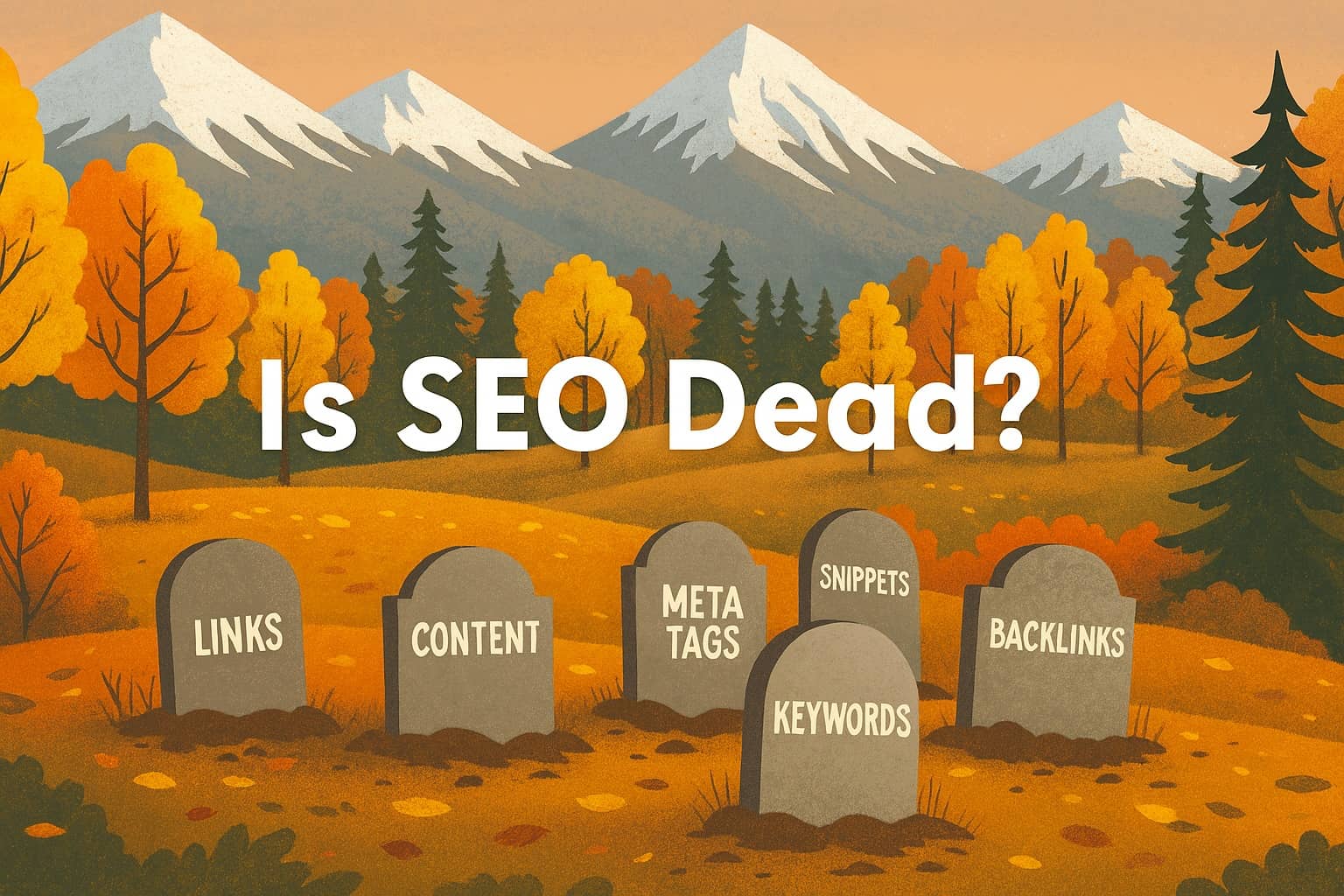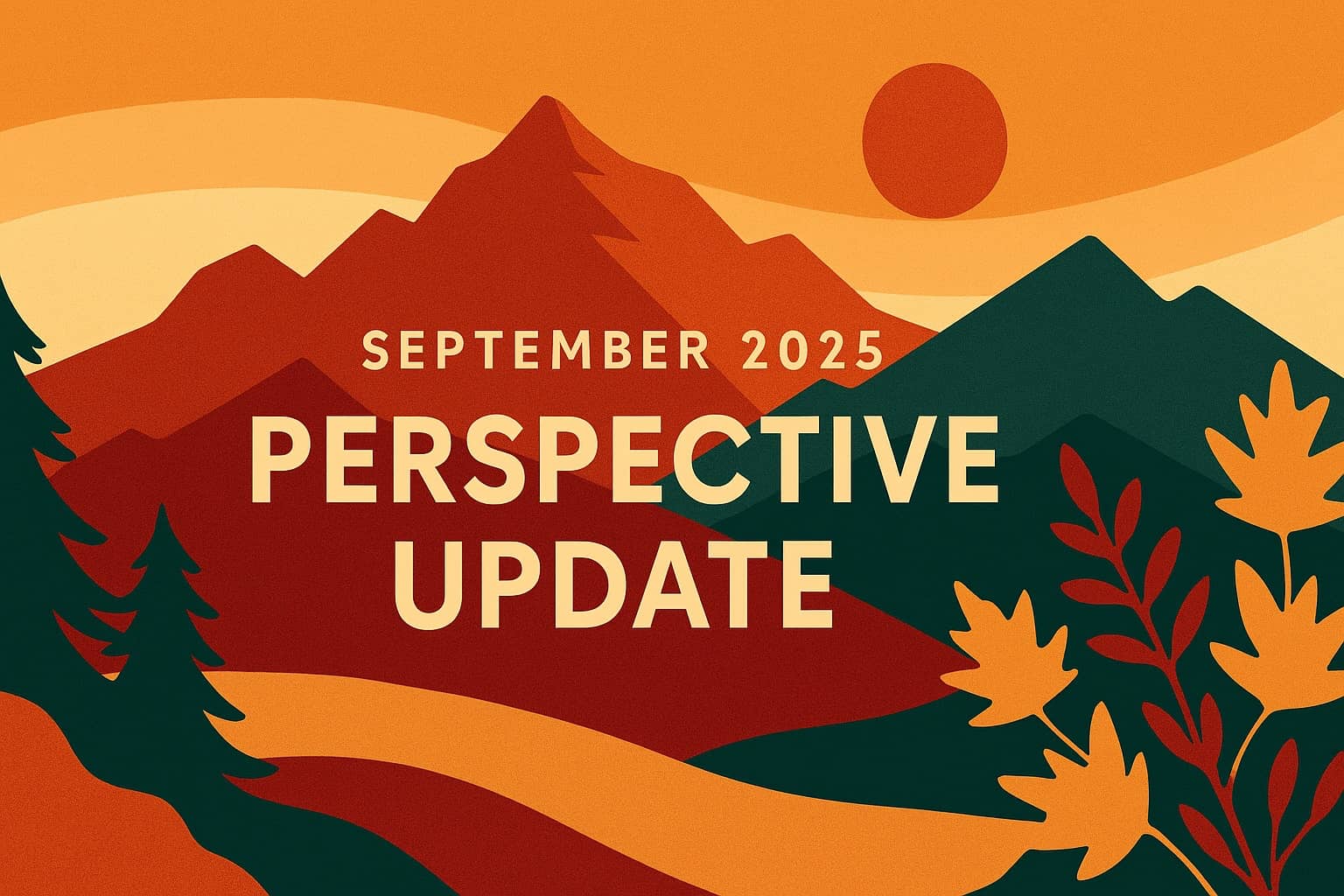table of contents
SEO is not dead, at least we sure hope not! SEO has shifted from exploit-driven tactics toward a broader, multi-channel discipline that prioritizes user intent, trust signals, and content engineered for both humans and AI-driven discovery systems.
Key Takeaways
- SEO no longer rewards shortcut tactics; it prioritizes user intent, trust, and experience across both traditional search and AI-driven discovery systems. Successful optimization now requires crafting authoritative, problem-solving content that both humans and machine readers can trust.
- Create concise canonical answers plus complementary longform and channel-native formats (video, FAQs, product cards) so your content can be surfaced by featured snippets, AI summaries, and social or marketplace discovery.
- Track signals like featured snippet impressions, AI-answer appearances, cross-platform traffic, and conversions while strengthening provenance (original data, bylines, structured data) to increase the likelihood that machines and users choose your content.

Is SEO Dead? Why Do People Say So?
AI-first interfaces and generative summaries often answer queries without sending users to a website, reducing some traditional organic click-throughs.
Platforms outside classic web search: short-form social apps, marketplaces, voice assistants, and LLM-powered chatbots, increasingly intercept discovery that once flowed through search engines. Understanding and tracking ‘people search’ behaviors, where your audience conducts their searches across these diverse platforms, is now crucial for optimizing content visibility and engagement. Optimizing content’s visibility involves factors like user engagement, keyword relevance, and authority signals that enhance discoverability across platforms and search engines. AI chatbots now influence search visibility and user engagement, becoming a new platform for content discovery and citation.
High-profile ranking volatility and frequent algorithm changes have made old “gameable” SEO tactics ineffective, so the visible decline of legacy techniques fuels the argument that SEO itself has expired.
AI reshapes the SEO industry by transforming how content is discovered and consumed, requiring marketers to adapt their strategies. This contributes to the evolving landscape of digital marketing, where adapting strategies is essential to stay competitive amidst continuous technological changes.
What actually changed about AI search?
Search has become probabilistic and answer-oriented: modern systems prefer to synthesize answers from multiple sources and present concise responses rather than rely solely on single-page keyword matches.
Google and other engines are layering AI summaries, featured answers, and knowledge panels above or in place of traditional organic links, which shifts traffic patterns but does not remove the need for discoverable, authoritative content. Google’s Knowledge Graph and Google’s AI Overviews are prime examples of features that influence search rankings and user behavior by providing answers directly on the search results page. As Google’s search landscape evolves, it increasingly prioritizes authority signals, AI-driven summaries, and zero-click results, making it essential to align your strategy with Google’s latest innovations to maintain visibility and relevance. Features like AI overviews, AI mode, AI-generated summaries, and AI-generated answers now provide answers directly on the search results page, often leading to zero-click searches and changing how users interact with search engines.
Discovery has decentralized: a meaningful portion of consumer intent now surfaces first on TikTok, Amazon, or assistants, so winning attention requires a presence beyond the classic SERP. Additionally, AI search results and new ways users access information are transforming how searches are conducted across platforms, further impacting visibility and SEO strategies.
AI Overviews
The search landscape has shifted again. AI Overviews now claim prime real estate at the top of Google’s results page, serving up synthesized answers before users ever think about clicking through to your site. Google’s advanced AI technology pulls from multiple sources to craft these instant responses, creating what you might call the “answer surface” above traditional search results. For marketers, this isn’t just another algorithm update to weather. It’s a fundamental change in how visibility works. AI Overviews and engagement metrics are now key factors in determining a piece of content’s visibility in search results, and optimizing for these factors can significantly enhance your content’s visibility across both search engines and social platforms.
Your traditional SEO playbook still matters—that’s the foundation these systems learn from. But if your strategy stops at page-one rankings, you’re missing the new game entirely. The focus has to evolve toward optimizing content that anticipates user questions and delivers the kind of direct, digestible answers that AI systems want to feature. Think question-and-answer structures, relevant keywords woven naturally, and responses that are both accurate and easily parsed. Since AI Overviews can cannibalize your click-through rates by giving users what they need without the visit, every piece of content becomes a potential brand mention you may never see in your analytics. That’s the gap we’re working in now—optimizing for visibility that doesn’t always translate to measurable traffic, but shapes how users encounter your brand in this evolving search ecosystem.
The Impact of AI on Search
Artificial Intelligence has fundamentally transformed the terrain we navigate when searching for and discovering information online—and we’re right there in the thick of it, adapting alongside our communities. Traditional search engines used to be the only trail to access information, but now we’re witnessing a whole new landscape unfold before us: AI search, generative engine optimization, and a host of emerging platforms that have become the vital touchpoints where real connections happen. Today’s searchers—our neighbors, customers, and communities—naturally turn to AI tools, social media platforms, and voice assistants to find answers, discover what they need, and engage with the brands that speak their language. This shift means we can no longer think of search engine optimization as just about claiming territory on Google; it’s about ensuring our presence feels authentic and accessible wherever people are genuinely searching, not just showing up as digital noise. We must now craft SEO strategies that honor these diverse platforms, leveraging engine optimization techniques that work seamlessly across both traditional search engines and AI-driven environments, and, crucially, focus on understanding and addressing user intent to ensure content truly meets the needs behind every search. By embracing these changes with the same passion we bring to our local communities, brands can maintain meaningful visibility, connect with new audiences, and thrive in this increasingly complex digital terrain where authenticity cuts through everything artificial.
The Role of Generative Engine Optimization
Generative Engine Optimization isn’t just another SEO trend we’re chasing; it’s the new frontier where we’re planting our flag for brands that refuse to be invisible in the AI-driven search landscape. As these intelligent engines pull answers from countless sources like digital prospectors sifting through mountains of content, we’re here to make sure your brand strikes gold in those AI-generated responses. We don’t believe in generic optimization tactics or cookie-cutter content strategies. Instead, we craft laser-focused, intention-driven content that speaks directly to what users are actually searching for, creating clear, compelling, and concise answers that AI systems can’t help but cite. By architecting your content to be the go-to source these generative engines reach for, we’re not just future-proofing your SEO strategy; we’re building your brand into a trusted authority that cuts through the digital noise. Because in a world where AI is rewriting the rules of how people find answers, optimizing for generative engines isn’t just smart strategy; it’s survival for brands that want to stay visible, relevant, and competitive.
Why SEO still matters
- Search systems still rely on signals you can influence: relevance, expertise, trustworthiness, and user experience remain foundational ranking factors for organic visibility. Optimizing for your content’s visibility and making sure to create content that is structured for both AI and search engines is now essential.
- Content that demonstrably solves user problems retains long-term value because it converts when discovery leads users to your property, and because high-quality content is more likely to be cited by AI and knowledge panels. Making your content easy for AI to cite and taking steps to structure content effectively increases its discoverability and authority.
- Traffic mix has changed, not vanished: while some clicks are lost to direct answers, new feature placements, rich results, and non-search channels create fresh opportunities to capture intent and conversions. To stay visible, leverage new discovery channels and engage with AI services to maximize reach and adaptability.
Creating a Search Experience
Crafting a search experience that truly connects isn’t just about checking SEO boxes; it’s about building bridges between your brand and the people searching for what you offer. This means moving beyond cookie-cutter optimization and diving deep into the real conversations happening across search engines and AI platforms. When you provide rock-solid sources and structure your content with genuine answers to the questions your audience is actually asking, you’re not just feeding algorithms, you’re serving real people with real needs. Smart use of analytics tools becomes your compass, guiding you through the ever-shifting terrain of user behavior and search patterns, helping you craft strategies that don’t just work today but evolve with your audience. A superior search experience isn’t about gaming the system; it’s about showing up authentically when it matters most, driving meaningful traffic that converts because it connects. At the end of the day, putting users first isn’t just good business; it’s how you build lasting relationships and stay ahead in a world where AI-driven search is reshaping how people discover, decide, and connect with brands.
The Importance of Content
Content visibility has never been more complex. AI-driven search isn’t just another update; it’s a fundamental shift in how information gets discovered, processed, and served back to users. Call it the intelligence layer, call it the new content battleground, or just call it reality. Your brand’s visibility now depends on whether AI systems can understand, extract, and cite your work. Traditional keyword tactics? That’s old thinking. The new game is about creating content that doesn’t just rank, it gets referenced by the machines that increasingly control what people see.
Start with the basics that actually matter now. Q&A-style headings aren’t just user-friendly, they’re AI-friendly. Conversational language that mirrors real search behavior. Direct answers are positioned where extraction algorithms can grab them easily. That’s your foundation. But here’s what separates the winners from the invisible: credible sourcing. Link to reputable publications. Reference official data. These aren’t just trust signals for humans anymore; they’re authority markers that AI systems use to decide whether your content deserves a citation. Miss this layer, and you’ll watch competitors get mentioned while your perfectly optimized content sits unseen. The visibility game has new rules. Clarity, structure, and trustworthiness aren’t nice-to-haves. They’re the price of admission to the new search landscape.
New optimization opportunities
Practical playbook — seven tactical steps
- Audit intent coverage and gaps – Map high-value queries to user intents and create one deep asset, one concise answer block, and one distribution asset for each intent. Audit your site for coverage and optimization to ensure all key topics are addressed.
- Create canonical answer blocks – Draft short, explicit answers with a clear claim, supporting evidence, and at least one cited source to raise the chance of being surfaced by AI summaries and featured snippets.
- Implement structured data and provenance signals – Add schema for articles, FAQs, products, reviews, and how-tos plus bylines, publication dates, and original data callouts to aid machine understanding and trust. Align with Google’s latest updates and best practices to maximize visibility, enhance brand visibility, and ensure compliance.
- Reformat for channel-native experiences – Produce 30–90 second videos, micro-articles, and metadata-optimized cards for social, marketplaces, and assistant consumption. These assets help users discover products as they search, evaluate, and make decisions in a single session.
- Strengthen distribution and amplification – Use partnerships, newsletters, syndication, and targeted link-building to seed content across authoritative surfaces so AI systems encounter and learn your signals from multiple contexts.
- Measure expanded KPIs – Track featured snippet impressions, AI-answer appearances, discovery traffic from non-search platforms, and assisted conversions rather than relying solely on rank positions.
- Continual experiment and data capture – A/B test concise answer formats, metadata variations, and distribution channels; capture first-party conversion data and unique research to future-proof assets.
Insights from a vice president at a major search company, such as Google’s Vice President and Head of Search, reinforce the importance of these steps in adapting to ongoing search and AI advancements.
What success looks like in the new era
- Your content is cited or summarized by AI and knowledge panels, especially Google’s knowledge panels and AI systems, and websites that are optimized for AI are more likely to be referenced and drive meaningful conversions, appearing across multiple discovery channels.
- You measure a diversified acquisition mix where organic search remains a strong conversion channel but sits alongside social, marketplace, and assistant-driven traffic.
- Your brand establishes clear provenance and unique data that make your content the preferred source when systems synthesize answers.
Conclusion
SEO is not dead; it has evolved into search-everywhere optimization that requires answer engineering, multi-format distribution, and explicit trust signals. The tactics that dominated the last decade have been replaced by more strategic work: understanding intent, designing canonical answers, and ensuring your content is discoverable across a wider set of platforms and AI-driven surfaces. Organizations that reframe SEO as cross-channel discovery engineering and invest in authoritative, user-first assets will win attention and conversions in this new landscape.




